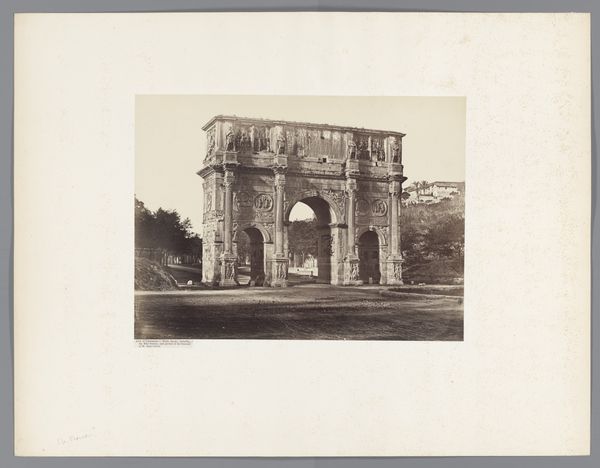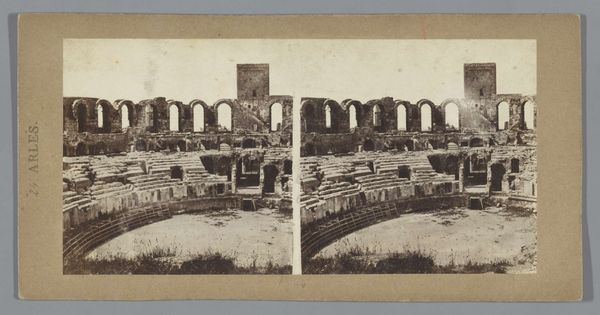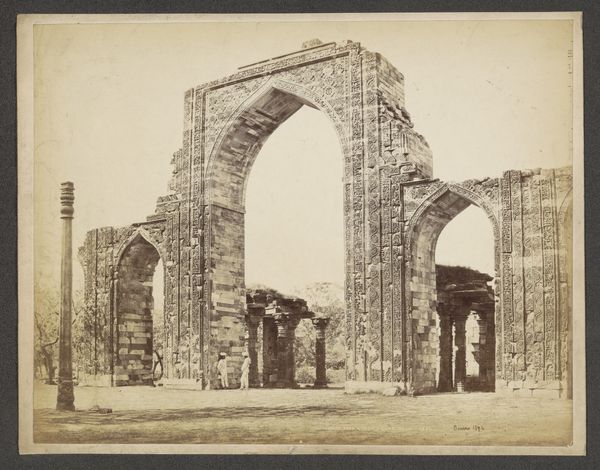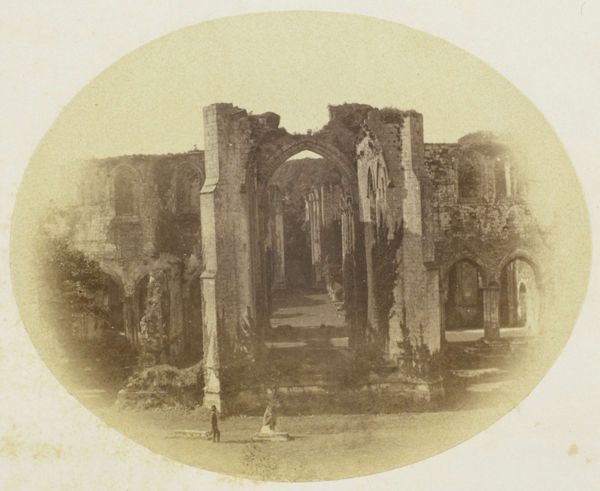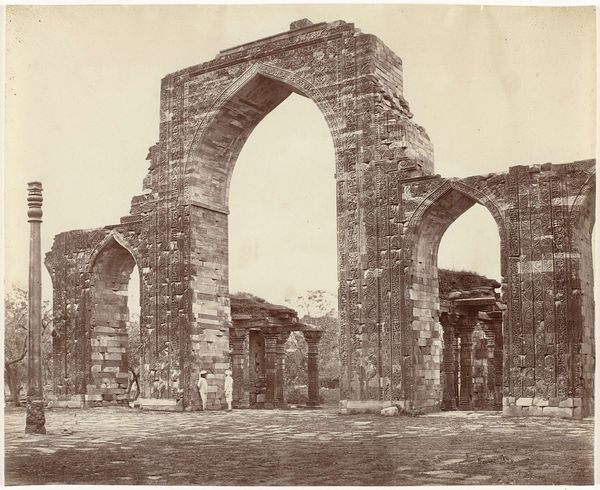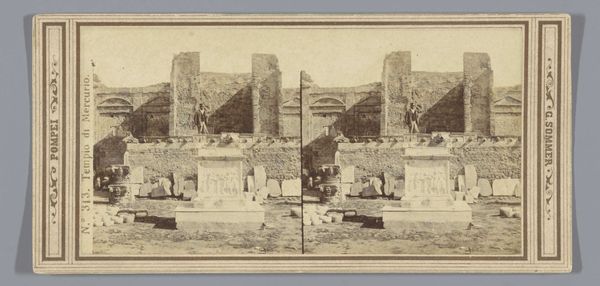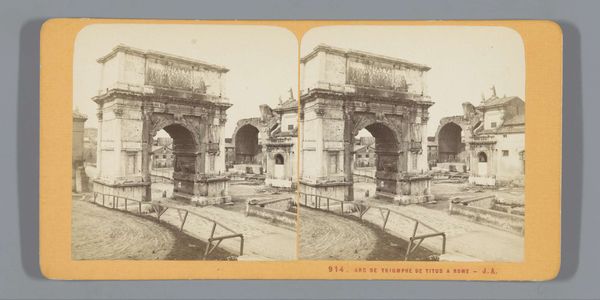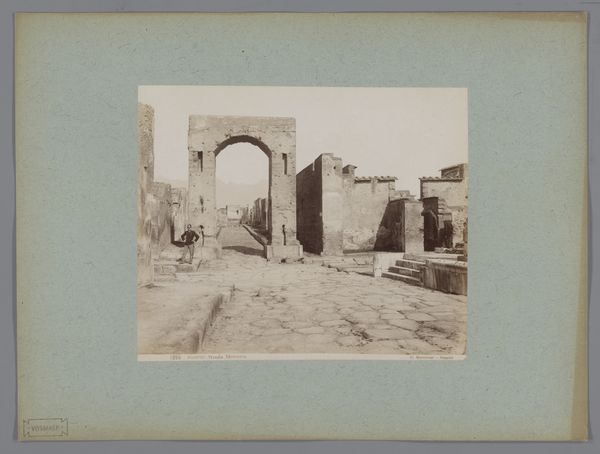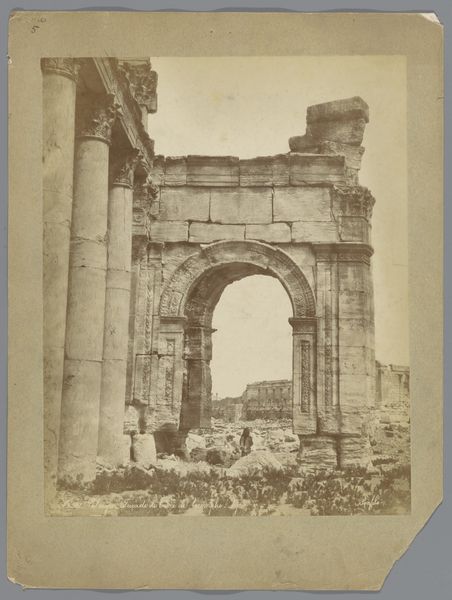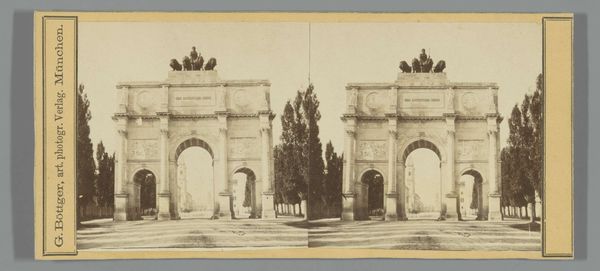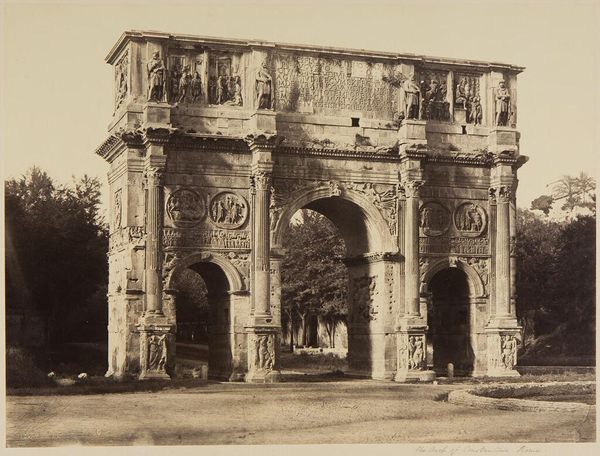
#
aged paper
#
toned paper
#
homemade paper
#
paper non-digital material
#
pale palette
#
coloured pencil
#
folded paper
#
watercolour illustration
#
paper medium
#
watercolor
Dimensions: height 85 mm, width 176 mm
Copyright: Rijks Museum: Open Domain
Curator: I'm struck by the almost dreamlike quality of this print—so soft and faded. It is "Gezicht op de Boog van Constantijn in Rome," a stereo card by Sommer & Behles, dating back to the 1860s to 1880s. It is photographic print, presented on toned paper. What's your take? Editor: Well, immediately I get a sense of poignant antiquity. The way the paper is aged, the image softened... it's as if looking at Rome through a veil of centuries, a visual echo of its enduring presence. Curator: Exactly! And that arch, The Arch of Constantine – built to commemorate Constantine’s victory in 312 AD. For me, the photographic treatment creates an interesting dialogue with time. The stereoscopic effect adds another dimension; like Rome herself, there are layers and echoes and histories superimposed one upon another. Editor: Indeed. The Arch itself becomes a symbol, or better, a gate, both triumphal and commemorative. Beyond military conquest, it speaks to something much larger, cultural memory itself, recorded and represented through image after image of Rome, the 'Eternal City.' Curator: I am curious about that framing effect of a stereoscopic printing - do you think it offers the contemporary viewer an easier way into experiencing Rome and its complex cultural layering? Or is there an aesthetic flattening that works against understanding its depths? Editor: Perhaps both! The effect undeniably simplifies. But in this distilled form, with the arch presented so centrally, so powerfully, one is almost forced to acknowledge the structure's endurance, it's defiance of temporality, in light of its eventual decay. It's a visual argument for Rome’s ability to overcome even entropy. Curator: Sommer and Behles are not generally discussed in conversations around innovation or photographic ingenuity, but here, they certainly achieve something rather arresting – particularly for those who understand Rome's layered history and enduring myth. Editor: Absolutely. It's more than just a photograph, it is a condensed meditation. Something both haunting, and surprisingly vital.
Comments
No comments
Be the first to comment and join the conversation on the ultimate creative platform.
